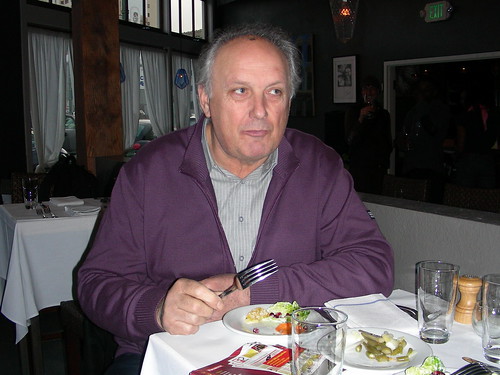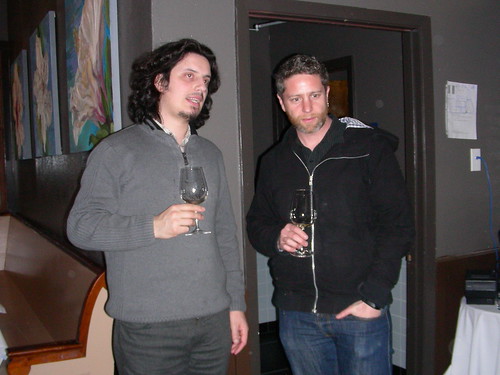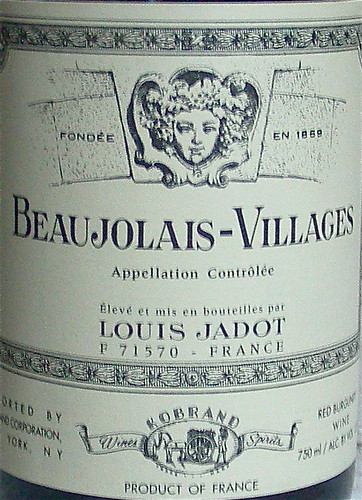Our first meeting was at Quintessa on Silverado Trail in St. Helena. It's a beautiful 280 acre property that includes a valley, a lake, a river, five hills, four microclimates and numerous soil types. 170 acres of vines are planted to the classic Bordeaux grape varieties: Cabernet Sauvignon (129 acres), Merlot (26 acres), Cabernet Franc (7 acres), Petit Verdot (4 acres), and Carmenere (4 acres). Thanks to the diversity of the microclimates and soil types, 40 different wines lots have been defined from 26 different vineyard blocks.
We were welcomed by Niesa Granger from the Quintessa Hospitality team, who had prepared for us some wine samples and documentation.
We first tasted two 2008 Vineyard Block Cabernet Sauvignon barrel samples. One was from the cool Bench block. The wine had a rather closed nose with lush, sweet berry flavors on the palate. The other one was from the Cruz del Sur block, a warm area without much water. The wine was very different with a more expressive nose and enticing minty and cocoa aromas.
We also tasted the 2005 and 2006 Quintessa. Quintessa is a meritage blend of multiple vineyard blocks. Fruit from each block is harvested, sorted, and fermented in either oak or stainless steel tanks. Then each block wine is aged separately for up to two years in French oak barrels. Finally, the components are brought together to create the final Quintessa blend.
The 2005 Quintessa had an fragrant nose full of minty and tobacco aromas. The palate was rich, full-bodied with sweet tannins and a peppery finish. The 2006 Quintessa looked more tight with toasty oak aromas and firm tannins, definitively too young to be drunk now but promising.
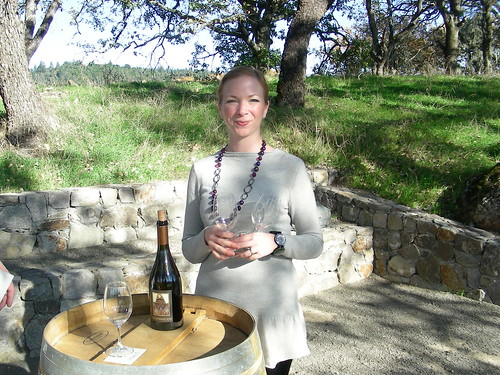
Tasting with Niesa Granger from the Quintessa Hospitality team
We ended our visit with a tour of the property. As we reached a scenic spot overlooking the lake, we stopped to have a sip of the winery's Illumination Sauvignon Blanc. The place was idyllic and it was quite unfortunate that we couldn't stay longer but we had to drive over the Mayacamas Mountains to the Sonoma side for our next appointment: Hanzell Vineyards.
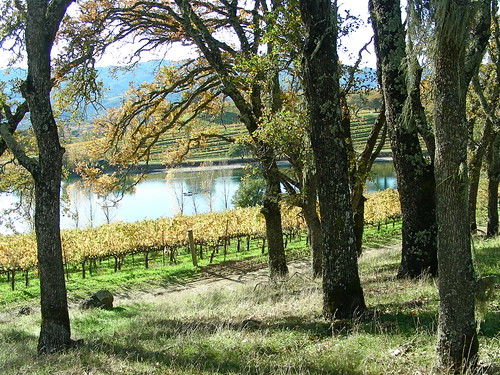
View of the lake at Quintessa
Technorati tags: wine food & drink

